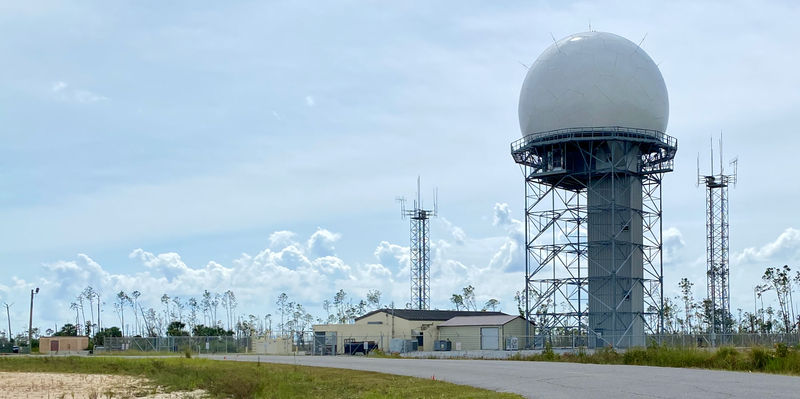Tyndall Air Force Base Radar Site
|
Tyndall Air Force Base Radar Site (1957-1983) - A Cold War Air Force Radar Station first established in 1957 on Tyndall Air Force Base in Bay County, Florida. The radar site was initially assigned a Permanent ID of TM-198, and later a Sage ID of Z-198 and a JSS System ID of J-11 in 1983. The site was deactivated in 1983 and a small compound was turned over to the FAA who continued operation of the installed radar now under the FAA ID of PAM. Operations continued under the FAA until Hurricane Michael severely damaged tower-mounted components on 10 Oct 2018. The ARSR-4 was restored to service on 16 Nov 2018.
HistoryEstablished in 1957 and became operational in 1957 at Tyndall Air Force Base manned by the 678th AC&W Squadron. The station initially had both a Ground-Control Intercept (GCI) and an early warning mission. The early warning mission involved tracking and identifying all aircraft entering their airspace while the GCI mission involved guiding Air Force interceptors to any identified enemy aircraft. Controllers at the station vectored fighter aircraft at the correct course and speed to intercept enemy aircraft using voice commands via ground-to-air radio. An additional mission of supporting the BOMARC surface-to-air missile system test launch program was conducted during the life of that program. Initial equipment included the FPS-20 search radar and a pair of FPS-6 height-finder radars. SAGE System TransitionThe transition of the manual GCI system to the automated SAGE system began with the installation of the FST-2 coordinate data transmitter and search radar upgrades. The FST-2 equipment digitized the radar returns and transmitted the digital returns to the SAGE direction center. Under the SAGE System, interceptor aircraft were directed to their targets by the direction center computers and controllers, greatly reducing the need for local controllers and equipment at every radar station. The FST-2 was a very large digital system using vacuum tube technology. Over 6900 vacuum tubes were used in each FST-2 requiring 21 air-conditioned cabinets, 40 tons of air conditioning, 43.5 kva of prime power, and usually a large new addition to the operations building. The FST-2B modification added two more cabinets but with newer solid-state (transistor) technology to process coded responses from aircraft transponders. SAGE System Operation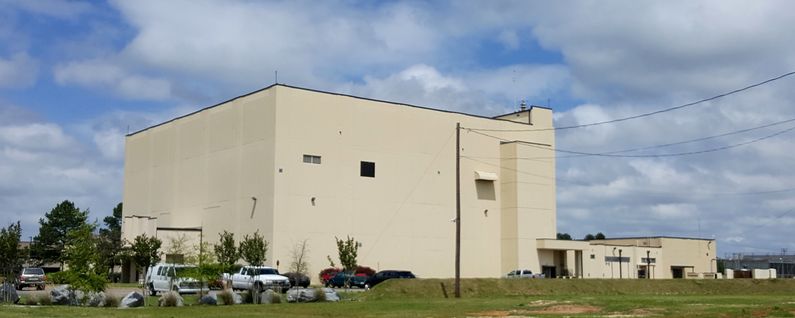
The site began operation as a SAGE site in 1960 initially feeding the Gunter SAGE Direction Center DC-09. On 14 Nov 1969 the site came under the operational control of the Fort Lee SAGE Direction Center DC-04 where it remained until deactivated in 1983 when the SAGE System was closed down. The FPS-20 search radar was upgraded to an FPS-64 in 1962 and then to an FPS-64A configuration in 1965. One of the two FPS-6 height finders was deactivated in 1969 and the other was upgraded to an FPS-116 configuration circa 1977. The FPS-116 was removed in 1988, leaving what had become the joint-use FAA site with only the FPS-64A search radar. Gap Filler RadarsTyndall AFS was responsible for the maintenance of two remote unattended gap-filler radar sites. The unattended gap filler sites were placed in locations where the main search radar lacked coverage. These sites were equipped with short range FPS-14 or FPS-18 search radars and FST-1 Coordinate Data transmitters that sent digitized radar target data to a SAGE direction center and to the main radar site. Both the radar set and the FST-1 were dual channel to increase site up time. Maintenance teams were dispatched for regularly scheduled maintenance or when fault indicators on the FSW-1 remote monitoring equipment suggested the site had problems. The FSW-1 also allowed remote operation of specific functions such as channel changes for the radar and for the FST-1, it also allowed remote operation of the diesel generators at the gap filler site. The Tyndall AFS gap-filler radars were located at Carrabelle, FL, and Eglin AFB, FL.
BUIC SystemTyndall AFS became a BUIC I NCC site in 1962 and went operational as a BUIC II site in 1965. It was selected as a BUIC III site and went operational with BUIC III on 7 Mar 1968. The site first served as a BUIC III training site before going operational in 1969. In 1970 the 678th Radar Squadron (SAGE) became the 678th Air Defense Group (BUIC). The BUIC III system provided a backup for a SAGE direction center with the GSA-51 computer system and provided the ability to display sector-wide radar data on consoles for local weapons controllers. The system duplicated the functionality of the vacuum tube direction center computers with the more up-to-date GSA-51 computer system and replaced the FST-2 with a more up-to-date coordinate data transmitter, first one of four prototypes FYQ-40s and later the production FYQ-47. The radar site provided support for the BOMARC System through the 1970s, first in support of some 150 test launches and later for U.S. and Canadian crew training exercises. These launches took place from the test site on Santa Rosa Island over the Gulf of Mexico and were later controlled from the Gunter SAGE Direction Center DC-09 and the BUIC System at Tyndall. ClosureAs the threat from a Soviet bomber fleet lessened the decision came to mothball the BUIC system in 1974. Tyndall was the only BUIC site that remained active. The 678th Air Defense Group and the BUIC site at Tyndall were deactivated on 1 Mar 1983. Tyndall AFB FAA Radar SiteAbout 1965 the Tyndall radar site became a joint-use FAA/ADC facility feeding data to the FAA's Jacksonville ARTCC and the Gunter SAGE Direction Center DC-09. After the closure of the Tyndall radar site in 1983, a separate FAA compound was established as JSS Site J-11 which operated a FPS-64A search. In 1982 the FPS-116 height finder was supported by USAF operating location OLAL 20th ADS. It was removed about 1988. In 1990 the FAA site is shown as operating an FPS-66A search radar and a CD-2C Common Digitizer. The Tyndall FAA site now operates an FAA ARSR-4 radar and an ATCBI-6M Beacon set. The radar site data is now available to the USAF/NORAD Battle Control System-Fixed (BCS-F) operations centers (EADS & WADS) as well as the FAA Jacksonville ARTCC (ZJX) and adjacent ARTCCs. Other federal agencies have access to the data under the Homeland Security umbrella. Hurricane Michael Update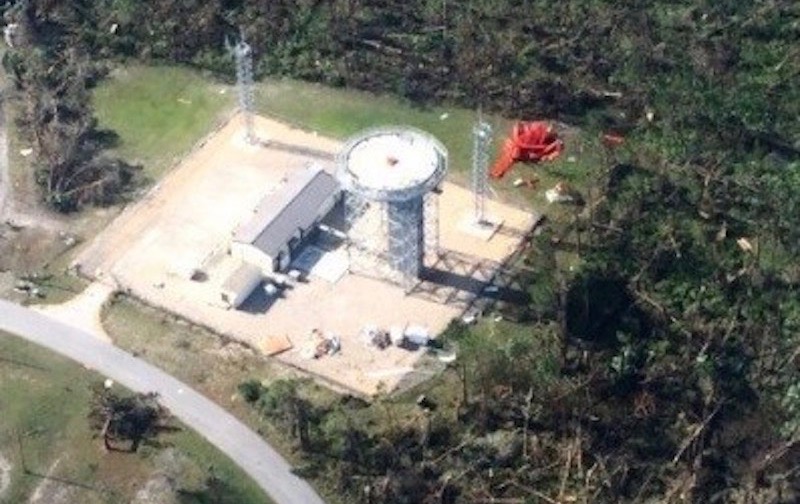 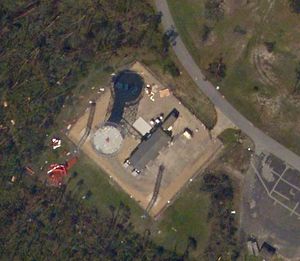 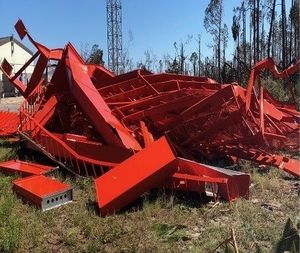 The FAA radar site ARSR-4 radome was swept away by Hurricane Michael on 10 Oct 2018. The antenna and the pedestal were also stripped from the tower and severely damaged. The tower is still in place and damage to the remainder of the equipment has not been reported. This post-hurricane NOAA view of the site is not clear enough to identify specific parts and locations except for the antenna which looks like a tangled pile of metal out from the southeast base of the tower, outside the compound fence. The FAA Public Affairs Office confirms that the ARSR-4 was restored to service on 16 Nov 2018, just 37 days after it went off the air.
Current StatusFAA JSS site on Tyndall Air Force Base in Bay County, Florida.
See Also: Sources:
Links:
Visited: 2 Oct 2021
| |||||||||||||||||||||||||||||||||||||||||||||||||||||||||||||||||||||||||||||||||||||||||||||||||||||||||||||||||||||||||||||||||||||||
